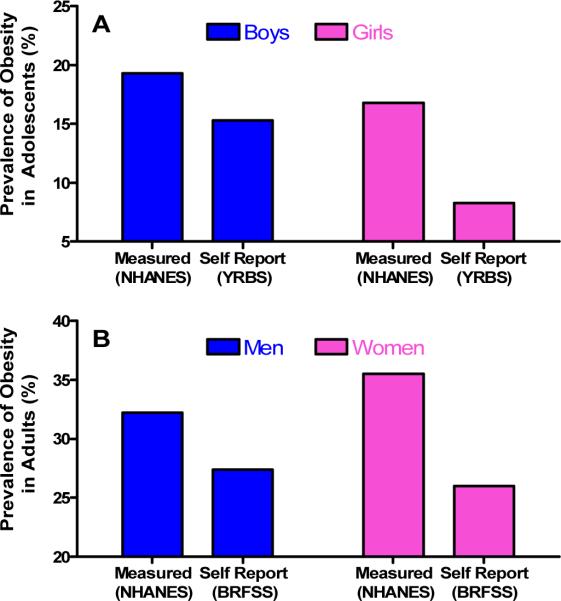Different Estimates of the Prevalence of Obesity among U.S. Children (Panel A) and Adults (Panel B).
NHANES (2007–2008) data are based on the body-mass index (BMI, the weight in kilograms divided by the square of the height in meters) calculated from measured height and weight among persons 12 to19 years old; the other data are based on the BMI calculated from self-reported height and weight among children in 9th to 12th grade (YRBS 2009) and among adults (BRFSS 2009). For adults (defined as 18 years of age or older in BRFSS and 20 years of age or older in NHANES), obesity is defined as a BMI of at least 30. For children, obesity is defined as a BMI greater than or equal to the age- and sex-specific 95th-percentile standard on the CDC 2000 BMI-for-age growth charts. The CDC 2000 growth charts for children older than 6 years are based on measured heights and weights obtained between 1963 and 1994.

